Latest On Bears’ Quarterback Situation
MARCH 10: ESPN’s Dan Graziano says the Bears did not find the trade market for Fields that they were hoping for (subscription required). Chicago, however, is not panicking and is willing to allow other quarterback dominos like Cousins and Mayfield to fall. Once some of the top players in the market find new homes or re-sign with their current clubs, there will still be a few QB-needy teams, at which point the interest in Fields should intensify.
While it now seems unlikely that Fields will fetch a second-round pick in a trade, the expectation remains that the Bears will eventually deal him and use the No. 1 pick on Williams.
MARCH 3: The situation of the Bears‘ future at the quarterback position has become quite a loaded topic. The closer we get to the 2024 NFL Draft, the more likely it’s beginning to seem that Chicago is attempting to move current starter Justin Fields as it prepares to move on to potential No. 1 overall draft pick Caleb Williams. 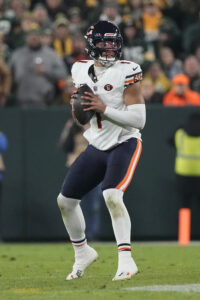
According to Diana Russini of The Athletic, chatter at the NFL scouting combine appeared to be consistent, with most believing that the Bears are moving on from Fields. Barring the team picking up his fifth-year option, 2024 would be the final year on Fields’ rookie contract. Instead of allowing Fields to play out his contract on the bench behind Williams, Chicago seems intent on dealing the 24-year-old and returning some value for a player they would eventually allow to walk in free agency.
ESPN’s Jeremy Fowler tells us that many in the league see Fields garnering a potential Day 2 pick for his services. A second- or third-round pick may not be the ideal result for a former first-round selection, but it’s better than getting nothing when his rookie deal expires. Fowler names the Falcons, Steelers, Raiders, and Vikings as possible teams of interest in Fields’ acquisition. Atlanta has been repeatedly linked to the young passer lately, with many debating whether or not he is the best fit in a Rams-influenced systems under new offensive coordinator Zac Robinson. Fowler reports the chances as “fairly good” that the Falcons walk away with either Fields, Kirk Cousins, or Baker Mayfield, leaving a larger range of possibilities for what Atlanta is looking for.
The Bears have made the claim that they want to “do right” by Fields by not leaving him in a “gray area.” Still, having shown their intentions, the team doesn’t necessarily have the strongest bargaining position. Russini poses that the team may need other moves to influence the demand for Fields. She quotes an NFC general manager who explained, “When people know you are getting rid of something, they don’t pay as much for it.” If a few veteran quarterbacks that are also available get moved and decrease the number of options for quarterback-needy teams, a bidding war for Fields may ensue. In order for that to occur, a number of big quarterback names would need to get signed well before the draft.
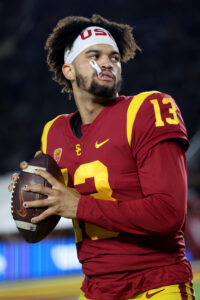 The draft serves as an effective deadline because once the Bears draft Williams, Fields becomes superfluous, and it’s seeming more and more likely that Williams will be the pick come late-April. At one point, that seemed to be in question as there were rumors that the USC quarterback may force a trade in an effort to avoid playing for the Bears. Williams has since backed down from that notion, according to Pete Thamel of ESPN, expressing excitement and intrigue in the prospect of heading to Chicago.
The draft serves as an effective deadline because once the Bears draft Williams, Fields becomes superfluous, and it’s seeming more and more likely that Williams will be the pick come late-April. At one point, that seemed to be in question as there were rumors that the USC quarterback may force a trade in an effort to avoid playing for the Bears. Williams has since backed down from that notion, according to Pete Thamel of ESPN, expressing excitement and intrigue in the prospect of heading to Chicago.
“I’m not pushing any agenda,” Williams said. “At the end of the day, the Bears have the last say. Regardless of how I feel, I’m not pushing an agenda of, ‘Yeah, I want to go,’ or ‘no, I don’t want to go.’ I’m excited for whatever comes.”
Still, Williams expressed a healthy interest in the Commanders, as well. Getting drafted to Washington would send Williams back to the area in which he went to high school at Gonzaga College HS. While he acknowledged that it would be cool to be so familiar with the area, he emphasized that his job is going to be in the facility working on his game.
There was also thought to be some concern about Williams’ draft-ability after some recent comments from his father, Carl. Carl was the one who suggested that his son would get “two shots at the apple,” according to Kalyn Kahler of The Athletic, essentially suggesting that if the situation as a No. 1 overall pick isn’t favorable, Williams could simply return to school with his NIL deals. The quote from Williams’ father made the rounds, seeding concern in some scouting circles.
Since then, though, it seems the concern has subsided. The more he was put under the microscope, the more Carl appeared just to be a heavily involved father who was extremely invested in helping his child achieve the peaks of his career and abilities. When asked about the situation at the NFL scouting combine, Bears general manager Ryan Poles claimed that he has “no concerns about” Carl’s comments, at all.
So, things appear to be falling into place. The Williams-era seems well on its way to being ushered in, and the Fields-domino will need to fall soon as a result. With free agency set to open in a week and a half, the demand for Fields may soon grow. It’s up to Chicago to find the perfect time to pull the trigger if they ultimately decide to deal Fields.
Raiders Expected To Aggressively Pursue Top-Three Pick
The Raiders have been mentioned as a suitor for one of the draft’s top-three quarterbacks, and the buzz is only getting louder. The Raiders are “expected to be aggressive” in trading up from pick No. 13 in pursuit of a quarterback, according to Vincent Bonsignore of the Las Vegas Review-Journal. Albert Breer of SI.com passes along a similar sentiment, writing that the Raiders are among the teams inquiring “on a trade-up for a quarterback.”
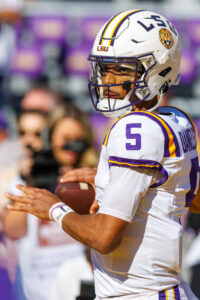 [RELATED: Raiders Interested In Acquiring No. 1 Overall Pick]
[RELATED: Raiders Interested In Acquiring No. 1 Overall Pick]
The organization left no stone unturned at last week’s combine, meeting with the majority of the draft’s quarterback prospects. As Bonsignore passes along, the team interviewed a range of QBs, including top prospects like USC’s Caleb Williams, LSU’s Jayden Daniels, and North Carolina’s Drake Maye. The team is especially enamored with Daniels, who was at Arizona State when Raiders head coach Antonio Pierce was on the staff.
A trade for any of those three quarterbacks would likely require a massive haul; the Bears are reportedly seeking a historic bounty for the No. 1 selection. As a result, the Raiders may need to pivot to one of the second-tier prospects like Michigan’s J.J. McCarthy or Washington’s Michael Penix Jr..
Vic Tafur and Tashan Reed of The Athletic believe one of those non-top-three QBs may be a more reasonable expectation, with the duo writing that a trade into the top-three “may be unrealistic.” Tafur and Reed also pass along that the organization has explored trades into the No. 5 to No. 7 range.
“You have to weigh how bad you want the player and how much you’re giving up,” general manager Tom Telesco said last week. “It’s just a judgment decision. Part of that is we may think we know the player is going to hit, but we really don’t. You never 100 percent know.”
While the quarterback prospects won’t have much (if any) say in their destination, it sounds like the incoming rookies were all impressed by Pierce and the organization.
“What a great job he did this past year,” Maye told Bonsignore. “So much respect for him for earning the respect of the guys.”
Teams Inquiring On Commanders’ No. 2 Overall Pick
Holding the No. 2 overall pick for a second time in five years, Washington has an opportunity it passed on in 2020. A quarterback should be expected to head to D.C. with that draft slot, but other teams are making early efforts to see if the Commanders are interested in moving the pick.
 Multiple clubs have inquired about Washington’s interest in trading down from No. 2, according to ESPN.com’s Dan Graziano. Some moving parts exist at quarterback, with some teams that lack top-three draft real estate needing to consider veteran options. But a couple of those teams figure to still need starter solutions — in the long term, at least — exiting free agency. That would naturally make the Commanders’ pick attractive, as this draft holds multiple non-Caleb Williams QB prospects expected to go early.
Multiple clubs have inquired about Washington’s interest in trading down from No. 2, according to ESPN.com’s Dan Graziano. Some moving parts exist at quarterback, with some teams that lack top-three draft real estate needing to consider veteran options. But a couple of those teams figure to still need starter solutions — in the long term, at least — exiting free agency. That would naturally make the Commanders’ pick attractive, as this draft holds multiple non-Caleb Williams QB prospects expected to go early.
Heisman winner Jayden Daniels‘ stock is up, with Mel Kiper Jr.’s latest ESPN.com mock draft sending the LSU prospect to Washington. Drake Maye had stood as this class’ top non-Williams option for months, and while the ex-Sam Howell North Carolina teammate’s stock may not have definitively dropped to the point he is a threat to fall out of the top three, NFL.com’s Daniel Jeremiah has moved him down on his latest big board. Jeremiah places Maye at No. 5 and Daniels at 6, though QB demand figures to see both going off the board earlier.
The Commanders, of course, have hired Williams’ most recent position coach — Kliff Kingsbury — as OC. Some around the league believe Kingsbury brings strong Williams support, per Fox Sports’ Ralph Vacchiano, though that would not exactly matter barring a seeming Bears course change. For weeks, it is believed Chicago would need to receive a historic offer to part with the No. 1 pick for a second straight year. With all signs pointing to the team trading Justin Fields and going with Williams, Kingsbury’s interest in a reunion would be a moot subject.
None of the quarterbacks Washington chose in the first round in its modern history — Heath Shuler, Robert Griffin III and Dwayne Haskins — panned out, but it would still surprise to see a new regime pass on filling its QB need at No. 2. New football ops president Adam Peters is indeed likely to authorize a quarterback choice at 2, Vacchiano adds.
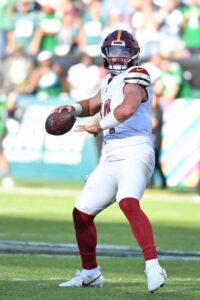 The team could collect a haul for that draft slot, as teams like the Giants, Vikings, Broncos and Raiders — mentioned as being interested in Daniels — being among those who would stand to be interested in coming up for a passer. Though, it would be rather astounding if the Commanders did business with the Giants involving a pick this high. By trading down with anyone, the Commanders would be passing on a clear window to upgrade at the game’s premier position if they took the trade route. Early on, the 2025 class does not appear to be a QB-rich group. Even with Peters playing a role in the 49ers’ Trey Lance trade-up, the ensuing Brock Purdy flier probably should not be taken as an indication the new boss believes a quarterback can be a later-round addition.
The team could collect a haul for that draft slot, as teams like the Giants, Vikings, Broncos and Raiders — mentioned as being interested in Daniels — being among those who would stand to be interested in coming up for a passer. Though, it would be rather astounding if the Commanders did business with the Giants involving a pick this high. By trading down with anyone, the Commanders would be passing on a clear window to upgrade at the game’s premier position if they took the trade route. Early on, the 2025 class does not appear to be a QB-rich group. Even with Peters playing a role in the 49ers’ Trey Lance trade-up, the ensuing Brock Purdy flier probably should not be taken as an indication the new boss believes a quarterback can be a later-round addition.
As for the Commanders’ 17-game starter from last season, Vacchiano adds Howell will likely draw trade interest from several teams if Washington made him available. Peters spoke highly of Howell this week, and the 2022 fifth-rounder’s age (23) and contract status (two rookie-deal years remaining) would naturally make him appealing — even as a host of bridge- or backup-level QBs are set to be available soon. For now, Howell appears positioned to be the Commanders’ backup in 2024 — or at best likely to lose his job once the No. 2 overall pick is ready to play.
Washington passed on drafting a QB in 2020 due to having chosen Haskins 15th overall the year prior. The team left Tua Tagovailoa and Justin Herbert on the board that year, choosing eventual Defensive Rookie of the Year Chase Young. It does not seem likely the NFC East franchise would make a similar move with the second overall choice this time.
Caleb Williams Will Not Throw At Combine
The importance of the NFL Scouting Combine continues to be called into question two years after stringent COVID-19 rules nearly caused a mass boycott of the event in 2022. The topic of the boycott brought attention to how important the combine is for late-round, fringe, and small school prospects while potentially serving as a negative for some of college football’s best. Those debates may crop up again with recent news that USC quarterback Caleb Williams plans not to throw at next week’s combine, according to Jordan Schultz of Bleacher Report. 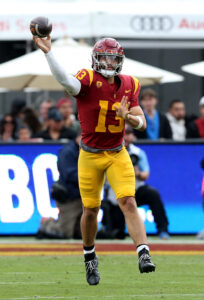
To clarify, Williams still plans on attending the event in Indianapolis, according to Ian Rapoport. He’ll be available to interview with any interested teams. It’s unclear if he’ll perform in any of the other workouts of the combine, but we know for sure that he will not throw. Rapoport informs us that Williams’ plan is to wait until his pro day, where he will throw and workout for scouts.
There will be pundits chirping on both sides of the story. Some will support the decision, claiming that he has nothing to gain from throwing at the combine. He’s already expected to be selected at No. 1 overall and plans to throw on March 20 at the Trojan’s pro day. What good can be done by working out twice?
The other side will point to character issues that have persisted in the media throughout his junior year of college. Williams’ mentality and leadership took hits late in the year from the media after the quarterback refused to speak to reporters following what ended up being his final game of college football. Rapoport himself seemed to call out the 22-year-old citing Joe Burrow as an example of how a quarterback should handle his role and responsibilities. His refusal to work out among the other quarterbacks is sure to draw criticism from those who already believe that “off-field concerns” exist for the young passer.
In reality, there are advantages to working at the combine, namely the officiality of the measurements and the additional opportunity to work with NFL coaches. Sure, he will get to perform workouts at his pro day, but the results of timed exercises will be hand-timed. Also, while some coaches will choose to attend USC’s pro day, the combine serves as an additional opportunity to work with NFL staff. Some will look down on Williams’ decision to reject that opportunity.
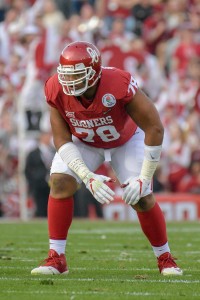 So, yes, there are advantages, but are they minimal for someone with his current draft stock? That’s difficult to answer. We have certainly seen bad combine performances affect draft stock. Most recently, free agent tight end Isaac Nauta went from first-round prospect to seventh-round pick in 2019. Similarly, Bengals offensive tackle Orlando Brown Jr. fell to the third round after what is classically seen as one of the worst combine performances of all time. Still, there are examples of players like Terrell Suggs, who, despite a terrible combine performance, still turned out to be a top-10 pick.
So, yes, there are advantages, but are they minimal for someone with his current draft stock? That’s difficult to answer. We have certainly seen bad combine performances affect draft stock. Most recently, free agent tight end Isaac Nauta went from first-round prospect to seventh-round pick in 2019. Similarly, Bengals offensive tackle Orlando Brown Jr. fell to the third round after what is classically seen as one of the worst combine performances of all time. Still, there are examples of players like Terrell Suggs, who, despite a terrible combine performance, still turned out to be a top-10 pick.
Could Williams be the next to fall victim to the combine? Probably not. He isn’t expected to deliver anywhere near that poor of a performance and, even if he did, his current stock is simply too high to warrant a drastic fall. Still, when he’s already at the top of most prospect rankings, there’s nowhere for him to go but down. It’s hard to blame him for choosing not to take any chances heading into the 2024 NFL Draft.
His announcement has, obviously, caught headlines, though. In the time between the Schultz’s initial report and this one, both Schultz and Rapoport have reported on a number of other prospect’s intentions. So far, South Carolina’s Spencer Rattler, Washington’s Michael Penix Jr., Oregon’s Bo Nix, and Michigan’s J.J. McCarthy have all made it known that they intend to throw next week. Only LSU’s Jayden Daniels has joined Williams in announcing his intentions to wait until his pro day, per Rapoport. The other four passers will have the opportunity to not only work out at the combine in front of NFL coaches but also to do so in direct comparison to their competition, with the lone exceptions (so far) of Williams and Daniels.
NFL Draft Rumors: Williams, DeJean, Newton
This week we got news that USC quarterback Caleb Williams, widely expected to be the No. 1 overall draft selection this April, will reportedly enter the NFL without representation, per Mike Florio of NBC Sports. This isn’t totally unheard of as we’ve seen quite a few NFL players of late accomplish new deals without an agent, but the situation is a little different for a potential top pick.
We’ve seen defenders like Richard Sherman, Bobby Wagner, and, more recently, Roquan Smith sign new contracts while representing themselves. More in the realm of Williams, we recently saw Ravens quarterback Lamar Jackson go through both the draft process and his first major extension without an agent.
Jackson was selected 32nd overall, while Williams is expected to be picked much earlier in the night. That means the deal that Williams will negotiate for himself will be worth quite a bit more money than Jackson’s rookie deal was worth. Still, rookie contracts are fairly restricted in how they can be built, so there shouldn’t be a ton of wiggle room in which Williams may mess something up.
Where Florio thinks the lack of representation could hinder Williams is in the leadup to the draft. He suggests that the agents of other quarterbacks or draft prospects hoping to supplant Williams’ top draft positioning will “spend the next two months trying to get teams to take their clients instead of Williams,” a process that can get dirty with negative framing being used to lessen the appeal of Williams. With a lack of representation, Williams would lack an advocate to appeal against the negative things being used against him.
Here are a few other recent rumors concerning the 2024 NFL Draft:
- Scouts and draft pundits will be disappointed to learn that Iowa cornerback Cooper DeJean will not be participating in the testing at next week’s NFL Scouting Combine, according to Dane Brugler of The Athletic. DeJean is reportedly still working his way back from a leg injury he sustained late in the season. Widely expected to be selected on Day 1 of the draft, he is considered one of the more athletic prospects in the class and likely would have drawn lots of eyes in Indianapolis. Instead, DeJean plans to work out for teams much closer to the draft at the end of April.
- Brugler reported that another likely first-round pick will not be working out at the Combine. Illinois defensive tackle Johnny Newton will sit out next week as he continues to recover from a January surgery that he underwent in order to repair a partial Jones fracture in his foot. He had been able to play through the injury through the second half of the 2023 season but, obviously, wished to repair the injury before heading to the league. Newton is expected to be cleared in time for an April pro day.
Bears Seeking “Historic Haul” For No. 1 Pick
Considering the presence of Justin Fields, there’s been some speculation that the Bears could look to move the first-overall pick to a quarterback-needy squad. While the organization isn’t completely shutting the door on a trade, it sounds like it would take a massive haul to pry the pick from Chicago.
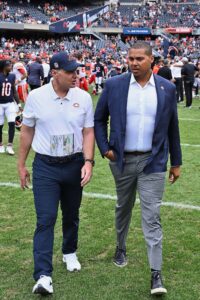 [RELATED: Latest On Bears’ Quarterback Decision]
[RELATED: Latest On Bears’ Quarterback Decision]
According to NFL Network’s Ian Rapoport, the Bears would require a “historic haul” if they were to consider moving the No. 1 pick. One source told Rapoport that the offer would need to be “crazy,” and the compensation would presumably need to be too good to refuse.
While it’s seeming increasingly likely that the Bears would select USC’s Caleb Williams first-overall and trade their former first-round QB, there was some merit to the opposite route. As Rapoport notes, many within the organization support Fields, and the Bears have been especially pleased with the QB’s development over the past year (one source described Fields’ makeup as “rare”).
Further, the Bears certainly aren’t strangers to trading the top-overall pick. They did so last year in a trade with the Panthers that netted them this year’s first-overall selection. The Bears could theoretically keep adding to their collection of future draft picks, and those rookie salaries would be especially useful as the team navigates a potential Fields extension.
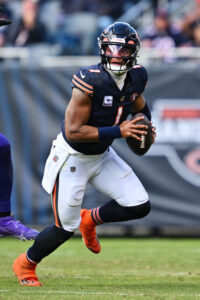 Of course, it’s that contract that will likely play a role in Chicago favoring a rookie QB. Assuming the organization picks up Fields’ fifth-year option, they’d still have their young QB on an affordable salary through the 2025 season. Then, Fields could command one of the most lucrative contracts in the NFL, a deal that might not be palatable for a squad that doesn’t seem all that close to contention.
Of course, it’s that contract that will likely play a role in Chicago favoring a rookie QB. Assuming the organization picks up Fields’ fifth-year option, they’d still have their young QB on an affordable salary through the 2025 season. Then, Fields could command one of the most lucrative contracts in the NFL, a deal that might not be palatable for a squad that doesn’t seem all that close to contention.
Further, the Bears aren’t in desperate need of high draft picks following last year’s trade. They’re already armed with both the No. 1 pick and the No. 9 pick in this year’s draft, and they would surely add some draft compensation if they decide to move on from Fields (although the QB isn’t expected to fetch a first-round pick).
General manager Ryan Poles was asked about his tough decision last month. The executive was naturally noncommittal regarding any specific direction, although he did go out of his way to praise Fields.
“We are going to turn every stone to make sure that we are going to make a sound decision for our organization,” Poles said (via Rapoport). “I did think Justin got better. I think he can lead this team. But at the same time, there is a unique situation.”
So what would a historic haul look like? The first-overall pick has been dealt 13 times since 1967, and the last two trades (Bears/Panthers in 2023 that saw Bryce Young go to Carolina and Titans/Rams in 2016 that saw Jared Goff go to Los Angeles) involved at least two first-round picks and two second-round picks in compensation. If a potential suitor doesn’t have any additional first-round selections besides their own, they’d be allowed to trade up to four first-round picks during the actual draft (their current selection plus three future picks).
Latest On Bears’ Quarterback Decision
The Bears would fetch far more by trading the No. 1 overall pick than by trading Justin Fields. Though, other advantages — the prospect value of Caleb Williams and having at least three more years of a rookie contract to build around — still look to be pointing the Bears in the direction of starting over.
 While headlines did surface in the pro-Fields direction, they have largely been blunted by the other QB route Chicago can take. Views around the NFL still lend toward Fields being on the move. The consensus at the Senior Bowl centered on the Bears trading Fields, according to the Boston Sports Journal’s Mike Giardi.
While headlines did surface in the pro-Fields direction, they have largely been blunted by the other QB route Chicago can take. Views around the NFL still lend toward Fields being on the move. The consensus at the Senior Bowl centered on the Bears trading Fields, according to the Boston Sports Journal’s Mike Giardi.
After trading the No. 1 pick last year — for a bounty that included D.J. Moore and what turned out to be this year’s top choice — the Bears should not be expected, barring an extraordinary development, to move out of the top slot again, the Chicago Tribune’s Brad Biggs notes. This would almost definitely mean drafting Williams at No. 1.
Kliff Kingsbury‘s Commanders OC hire has invited speculation about a reunion between the recent USC quarterbacks coach and his prized pupil, though the parties only worked together for several months. This would only be relevant if the Bears show a willingness to pass on Williams and take the next-best quarterback at 2. This would be an obvious risk given Williams’ prospect profile.
The concept of the Bears trading down and still grabbing a quarterback represents a farfetched scenario, Biggs adds, though if the team place near-equal grades on the top two prospects, it is conceivable it would entertain a trade-down maneuver. Still, Biggs classifies the prospect of Chicago moving down as “remote.” The team that passed on Patrick Mahomes and Deshaun Watson for Mitch Trubisky will naturally face pressure to nail its upcoming QB decision and find the franchise-level option that has eluded the organization since at least Jim McMahon.
Moving down and being comfortable enough with Drake Maye or Jayden Daniels would be a fascinating call by the Bears, who would then have assets from a Fields trade and from moving down one spot on the board. Then again, Ryan Poles did not draft Fields. Passing on the likes of Bryce Young and C.J. Stroud and then punting on the Williams draft slot would invite scrutiny on Poles, despite his shrewd move to pick up assets from the Panthers. How the Commanders grade the top QB prospects will naturally determine their interest level in moving up to 1. Williams, per The Athletic’s Kevin Fishbain, should still be expected to go first overall — as he has for months.
 Fields’ marginal improvement, which led to a lukewarm Poles postseason endorsement (after the GM built his 2023 offseason around Fields developing), and the Commanders’ Kingsbury hire may be tertiary matters regarding the upcoming draft. The Bears’ access to Williams remains the lead story. Fields has shown generational gifts as a runner but has not developed into a passer that would, in the eyes of most, make it a genuine debate between a path with him or Williams as Chicago’s QB1. Fields’ penchant for bailing on plays early frustrated some with the Bears, Giardi adds. He finished this season 23rd in QBR.
Fields’ marginal improvement, which led to a lukewarm Poles postseason endorsement (after the GM built his 2023 offseason around Fields developing), and the Commanders’ Kingsbury hire may be tertiary matters regarding the upcoming draft. The Bears’ access to Williams remains the lead story. Fields has shown generational gifts as a runner but has not developed into a passer that would, in the eyes of most, make it a genuine debate between a path with him or Williams as Chicago’s QB1. Fields’ penchant for bailing on plays early frustrated some with the Bears, Giardi adds. He finished this season 23rd in QBR.
After Fields did not move the Bears into playoff contention during his rookie contract, the Bears — or, in all likelihood, another team — must decide on the 2021 first-rounder’s fifth-year option by May. As Fields is set to become more expensive soon, the Bears would have the luxury of keeping Williams on a rookie deal through at least 2026. Williams can be tied to his rookie pact through 2028 via his own fifth-year option.
A December breakdown pegged Fields’ trade value modestly, indicating the Bears would be likely to receive proposals headlined by a Day 2 pick. It would be interesting to see if the Raiders showed interest in the three-year vet, given Fields’ up-and-down tenure alongside Luke Getsy. But Las Vegas is a team in need at the position; that need has since brought the Daniels-Antonio Pierce connection back to the surface. While the Vikings and Broncos also carry needs and reside in similar draft territory (Nos. 11 and 12), Fields would not seem a fit for either Sean Payton or Kevin O’Connell‘s offenses. Now that the Falcons have hired Sean McVay disciple Zac Robinson as OC, Fields’ Atlanta fit may not be optimal. Then again, teams holding picks outside the top three may need to get creative — especially those that do not land Kirk Cousins or Baker Mayfield.
Arthur Smith revamped his offense for Marcus Mariota in 2022, and although the Steelers have Kenny Pickett tentatively installed back atop their depth chart, how Pittsburgh goes about adding competition will be worth monitoring. A Fields trade would not seemingly be competition-focused but rather a move aimed at landing a surefire starter.
Vikings, Broncos On Radar To Trade Up For First-Round QB?
This year’s draft could begin with three quarterbacks, and the teams currently holding the top choices have been steadily linked to taking a first-round passer. Teams in need of signal-callers who do not carry friendly draft real estate will, of course, be monitoring the buzz circulating around the Bears, Commanders and Patriots’ draft blueprints.
Two clubs who appear to be among those watching top QB prospects look to be those positioned just outside the top 10. Holding the Nos. 11 and 12 overall picks, the Vikings and Broncos are believed to be interested in drafting a quarterback high. While it will take considerable draft capital to climb into the top three, neither of these two are in good shape at the position. Minnesota, however, may still have the inside track on Kirk Cousins, who has expressed his fondness for his Twin Cities situation on a number of occasions.
[RELATED: Vikings Want To Re-Sign Kirk Cousins]
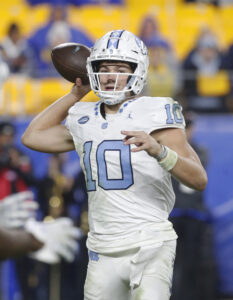 Some around the league are keeping an eye on the Vikings’ interest in moving up for a passer, ESPN.com’s Jeremy Fowler offers, noting the team did extensive work on the QB front last year. The Vikes were the team most closely tied to showing Trey Lance interest — before the Cowboys completed a trade for the former 49ers No. 3 overall pick — and they did not come to an agreement on another extension with Cousins.
Some around the league are keeping an eye on the Vikings’ interest in moving up for a passer, ESPN.com’s Jeremy Fowler offers, noting the team did extensive work on the QB front last year. The Vikes were the team most closely tied to showing Trey Lance interest — before the Cowboys completed a trade for the former 49ers No. 3 overall pick — and they did not come to an agreement on another extension with Cousins.
Guaranteed money into the deal’s third year provided a sticking point, and the Vikings merely restructured Cousins’ contract. The latter transaction has put Minnesota in a time crunch, and the team could face the prospect of losing its starting QB — who has mentioned testing free agency — and being hit with a $28.5MM dead-money bill brought on by void years. If the Vikings do not re-sign Cousins by the start of the 2024 league year (March 13), that $28.5MM accelerates onto their 2024 cap sheet. Not quite the Tom Brady void years-driven cap charge the Buccaneers just faced ($35.1MM), but that is a high dead-cap number devoted to one player.
Cousins, 35, will undoubtedly factor in a potential Vikings desire to trade up for a quarterback into his latest free agency decision. Cousins is the longest-tenured Vikings QB1 since Tommy Kramer, narrowly edging Daunte Culpepper as the third-longest-tenured QB1 in team history. Like Culpepper in 2005, Cousins is coming off a major injury. The Vikings and other teams will be factoring Cousins’ Achilles tear into prospective offers.
The Broncos are almost definitely moving on from Russell Wilson, preparing to enter dead-money infamy in the process. The forthcoming dead-cap hit will cost the Broncos $84.6MM, which will be spread over two offseasons due to the expected post-June 1 designation. This stands to limit the Broncos’ interest in pursuing a pricey veteran — should any starter-caliber arms be available by the time the legal tampering period begins March 11 — and would naturally make Sean Payton‘s team more interested in a draft investment. The Wilson-fronted five-game win streak midway through this season, however, moved the Broncos down to the No. 12 slot. That will complicate a move into high-end QB real estate.
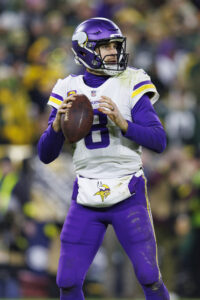 A rumor at the East-West Shrine Game involved Payton being interested in the Broncos moving up to draft Caleb Williams, Drake Maye or Jayden Daniels, Sportskeeda’s Tony Pauline writes. Of course, the cost of doing business here would be steep — and the team would need a willing seller. The prospect of Denver trading up may already be drowning in cold water, too, with Pauline adding the team should not be considered likely to move in this direction because of the draft capital — and/or established players — that would need to be included.
A rumor at the East-West Shrine Game involved Payton being interested in the Broncos moving up to draft Caleb Williams, Drake Maye or Jayden Daniels, Sportskeeda’s Tony Pauline writes. Of course, the cost of doing business here would be steep — and the team would need a willing seller. The prospect of Denver trading up may already be drowning in cold water, too, with Pauline adding the team should not be considered likely to move in this direction because of the draft capital — and/or established players — that would need to be included.
The Broncos gave up their first-round picks in 2022 and ’23 in the Wilson trade, and while they obtained a 2023 first-rounder from the Dolphins in the Bradley Chubb swap, it was subsequently thrown in to acquire Payton’s rights last year. This stands to be the Broncos’ first chance to use a Round 1 pick since they nabbed Patrick Surtain ninth overall in 2021. Surtain has become one of the NFL’s top young corners, and GM George Paton — who is still with the team despite being the point man behind the Wilson and Nathaniel Hackett calls — said Surtain is viewed as a cornerstone piece. Denver’s actions at last year’s trade deadline, which featured at least two first-rounders to even warrant a Surtain discussion, back that up. Pauline adds the Broncos do not want to part with Surtain and would only do so as a last resort in an effort to trade up for a QB.
Wilson’s 2023 rebound notwithstanding, the Broncos have obviously struggled to fill this spot since Peyton Manning‘s 2016 retirement. They were in the Cousins mix in 2018 but bowed out — as the Vikings emerged in pole position — en route to Case Keenum. The Broncos would seemingly have another shot at Cousins now, though QB demand would still make the veteran starter costly — even after the Achilles tear. As of early February, the Vikings are projected to hold more than $24MM in cap space; the Broncos are nearly $24MM over the projected salary ceiling.
Most around the NFL view the Broncos reconciling with Wilson as unlikely, Fowler adds. If Wilson were to remain on Denver’s roster past the fifth day of the 2024 league year, his 2025 base salary ($37MM) locks in. That would balloon Denver’s 2025 dead money for a Wilson release past $85MM. Hence, the team’s controversial maneuvering in an attempt to move the date on which Wilson’s injury guarantee vests.
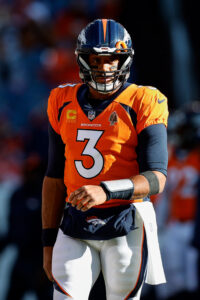 Although Wilson was fond of Payton prior to the parties’ partnership, Fowler adds Payton let it be known behind the scenes he was not big on the ex-Seahawks star. Wilson’s penchant for creating plays out of structure ran counter to how Payton prefers his offense to run, being part of the reason — along with the injury guarantee — the Broncos benched him for Jarrett Stidham in Week 17. Fowler mentions Minnesota as a destination Wilson would likely pursue, given Kevin O’Connell‘s presence, in the event Cousins leaves after six years. O’Connell worked alongside ex-Seahawks OC Shane Waldron under Sean McVay. The Vikings also roster Justin Jefferson, Jordan Addison and T.J. Hockenson.
Although Wilson was fond of Payton prior to the parties’ partnership, Fowler adds Payton let it be known behind the scenes he was not big on the ex-Seahawks star. Wilson’s penchant for creating plays out of structure ran counter to how Payton prefers his offense to run, being part of the reason — along with the injury guarantee — the Broncos benched him for Jarrett Stidham in Week 17. Fowler mentions Minnesota as a destination Wilson would likely pursue, given Kevin O’Connell‘s presence, in the event Cousins leaves after six years. O’Connell worked alongside ex-Seahawks OC Shane Waldron under Sean McVay. The Vikings also roster Justin Jefferson, Jordan Addison and T.J. Hockenson.
If/once Wilson departs Denver, his next team will not need to pay him nearly what the Broncos and Seahawks have. Wilson’s 2023 rebound still probably places him as a mid-tier starter, but Fowler adds his next team could build around him more effectively due to the offset language in the Broncos’ five-year, $245MM extension. Wilson signing at a low rate would be punitive for the Broncos, as their two-year starter’s next deal helps determine how much dead money will be on tap.
Cousins and Wilson join Baker Mayfield and Ryan Tannehill as experienced starter options set to hit the market. But Denver and Minnesota will need to weigh their chances of trading up in Round 1 against spending on a veteran. There will be plenty of moving parts at QB for certain teams this offseason, with the Bears’ upcoming Williams-or-Justin Fields decision a rather important domino as well.
USC’s Caleb Williams To Enter 2024 Draft
While connected to potentially bypassing the 2024 draft if he found his potential destination unsatisfactory, Caleb Williams will make his expected move soon. The USC quarterback is entering the draft, ESPN.com’s Pete Thamel reports.
Williams has long been expected to declare, and he joins Drake Maye in doing so. The 2022 Heisman winner is favored to become the No. 1 pick, with the Bears firmly in play to move on from Justin Fields and draft the two-year USC star. That is not set in stone, however, and Fields’ status will play a major role in Williams’ NFL future.
Monday represents the deadline for players to make their draft declarations, and while Williams has made millions via the NIL component that has changed major college athletics, that pales in comparison to what he would make over the course of a fully guaranteed No. 1 overall contract. Bryce Young is tied to a $37.96MM fully guaranteed deal; the No. 1 pick in 2024 will slide in a bit higher.
 The Bears have a fascinating decision ahead, and Williams will drive the seminal call. The former Oklahoma recruit has been viewed as a top-tier prospect for an extended stretch, with his ceiling as a passer separating him from Fields, who has shown elite abilities as a runner but has been inconsistent as a thrower through three seasons. The Bears traded the No. 1 overall pick to the Panthers last year, allowing Carolina to move up for Young. Williams brings a higher prospect pedigree than Young or C.J. Stroud, giving the Bears more to consider this year. After making the Carolina trade before free agency last year, GM Ryan Poles looks set to be more deliberate this time around.
The Bears have a fascinating decision ahead, and Williams will drive the seminal call. The former Oklahoma recruit has been viewed as a top-tier prospect for an extended stretch, with his ceiling as a passer separating him from Fields, who has shown elite abilities as a runner but has been inconsistent as a thrower through three seasons. The Bears traded the No. 1 overall pick to the Panthers last year, allowing Carolina to move up for Young. Williams brings a higher prospect pedigree than Young or C.J. Stroud, giving the Bears more to consider this year. After making the Carolina trade before free agency last year, GM Ryan Poles looks set to be more deliberate this time around.
Transferring from Oklahoma to follow Lincoln Riley to Los Angeles, Williams won the Heisman as a sophomore after throwing for 4,537 yards and 42 touchdowns while limiting his interceptions to only five. This past season, Williams kept his interception total at five but failed to match his other Heisman numbers with 3,633 passing yards and 30 touchdowns, albeit in two fewer games.
The 6-foot-1 QB has drawn early Patrick Mahomes comparisons, and while that is a lofty standard, Williams will enter the NFL with a better accuracy profile compared to the Chiefs megastar. Williams completed 68.4% of his passes as a junior and averaged 9.4 yards per attempt, marks north of his Heisman-season totals. He also operated in a larger spotlight compared to any QB who has entered the draft over the past two years. Like Trevor Lawrence during his junior season, Williams entered his final college campaign as the runaway favorite to be the following year’s No. 1 pick.
Chicago passing on Williams at 1 would surprise. Fields showed progress as a passer in Year 3, but development and being the reason for passing on a No. 1 overall pick for a second straight year are different matters. Poles also did not draft Fields; predecessor Ryan Pace did. The Bears must decide on Fields’ fifth-year option by May. If the Bears trade him, they would do so before that point, giving Fields’ second NFL team that responsibility. Drafting Williams would also come with at least three years of rookie-deal salary, giving Chicago a chance to fortify its roster in other places. Picking up Fields’ option would start the clock on the Ohio State alum, whose rookie-deal salaries would stop in 2024.
The Fields case is not without considering for Chicago, either; it just comes with tremendous risk. Trading the top pick would fetch the Bears far more than trading Fields will, potentially requiring a Robert Griffin III-type haul for a team to move up — well, depending on where that team is currently slotted. But Poles and Co. would need to be convinced Fields will develop into a surefire franchise option for that route to be strongly considered.
Although some buzz about Fields still being the Bears’ future has emerged, more Williams-to-Chicago noise has come out. Either way, this will be one of the most interesting leadups to a draft in modern NFL history.
Justin Fields Making Bears’ Decision Difficult; Team Setting Higher Trade Price For 2024 No. 1 Pick?
Barring an unexpected development, Ryan Poles will have the opportunity to consider another trade involving a No. 1 overall pick. The second-year Bears GM is unlikely to be fired, per ESPN.com’s Jeremy Fowler and Courtney Cronin. But a similar decision awaits him once the season ends.
 Poles’ 2023 choice equipped the Bears with a haul of draft choices, including a Panthers pick now guaranteed to check in at No. 1 overall, but the young GM has not seen Justin Fields submit an open-and-shut case to stay on for a fourth season. Recommitting to Fields would now require the Bears to trade a No. 1 overall pick for a second straight year. Considering Poles was not with the team when it traded up for Fields in 2021, the stakes attached to the GM’s next decision are even higher.
Poles’ 2023 choice equipped the Bears with a haul of draft choices, including a Panthers pick now guaranteed to check in at No. 1 overall, but the young GM has not seen Justin Fields submit an open-and-shut case to stay on for a fourth season. Recommitting to Fields would now require the Bears to trade a No. 1 overall pick for a second straight year. Considering Poles was not with the team when it traded up for Fields in 2021, the stakes attached to the GM’s next decision are even higher.
Since coming back from an early-season injury, Fields has impressed in spurts. The third-year QB is believed to have made the Bears’ decision more difficult, Fowler and Cronin note, but two anonymous GMs said (via the Washington Post’s Jason La Canfora) Chicago should still be expected to draft Caleb Williams — who has not yet officially declared — first overall and trade Fields. A panel of NFL staffers said the same last month, indicating the Ohio State alum would be highly unlikely to fetch the Bears a first-round pick in a 2024 trade.
Fields’ recent spurt aside, his overall body of work would make passing on a prospect like Williams difficult. Chicago’s dual-threat passer is 8-19 as a starter and has struggled in fourth quarters this season. Per ESPN, Fields ranks last out of qualified passers with a 51.8% fourth-stanza completion rate while sitting 30th in QBR in final periods. Since 2021, Fields’ 16 fourth-quarter INTs lead the league. Fields’ run-game brilliance and superior work earlier in games (No. 4 in TD-INT ratio through games’ first three quarters this season) works in his favor, but thus far, more expect the Bears to start over rather than stick here.
 If Fields can win what was previously described as an uphill battle and keep his job for 2024 — something that would require the Bears to pick up his fifth-year option by May — Poles will likely view this as a hotter ticket compared to the 2023 top pick. It cost the Panthers D.J. Moore, their Nos. 9 and 61 picks last year, their 2024 first and a 2025 second to move up for Young. Williams’ prospect status topping those of Young or C.J. Stroud points to the Bears setting a higher price, with ESPN.com adding several execs view the USC talent as being worth two future first-rounders and either a Day 2 pick or a veteran on a reasonable contract.
If Fields can win what was previously described as an uphill battle and keep his job for 2024 — something that would require the Bears to pick up his fifth-year option by May — Poles will likely view this as a hotter ticket compared to the 2023 top pick. It cost the Panthers D.J. Moore, their Nos. 9 and 61 picks last year, their 2024 first and a 2025 second to move up for Young. Williams’ prospect status topping those of Young or C.J. Stroud points to the Bears setting a higher price, with ESPN.com adding several execs view the USC talent as being worth two future first-rounders and either a Day 2 pick or a veteran on a reasonable contract.
It cost the 49ers two future first-rounders and a third to climb nine spots for Trey Lance. The Eagles gave up a first-rounder, two seconds and two thirds for Jared Goff in 2016. Washington’s price to climb from No. 6 to No. 2 for Robert Griffin III was two future firsts and a second in 2012. It will, then, be worth debating if the Bears are better off continuing to build around Fields and the haul they could receive for the presumptive Williams draft slot or starting over with the 2022 Heisman winner (on rookie-deal money through at least 2026) and whatever they receive in a trade for Fields. Chicago’s incumbent QB would be worth a second- or third-rounder in a pre-draft swap, per Fowler.
The Bears giving up on Fields after three years would match the timeline Mitch Trubisky received. A three-and-done Fields stay would also show how the league has changed since the 2011 CBA reshaped rookie contracts. Rex Grossman was in Chicago for six years, though he did not finish out his tenure as the team’s starter. Despite leading the Bears to just one playoff berth, Jay Cutler stayed as the Bears’ QB1 for eight seasons. With Cutler checking in perhaps just south of the franchise-QB bar, Chicago has been in search of its next such piece since at least Jim McMahon, whose injury troubles shortened his Windy City stay.
 These factors complicate Poles’ decision, but he is expected to be the one making it. Fowler and Cronin add Poles has cultivated a good relationship with new president Kevin Warren. A Sunday report indicated Matt Eberflus was more likely than not to stay on, but La Canfora notes the prospect of Warren — who arrived in Chicago after both Eberflus and Poles — firing the two-year HC and starting with a more offensively oriented leader (in the event Williams is drafted) should not be dismissed.
These factors complicate Poles’ decision, but he is expected to be the one making it. Fowler and Cronin add Poles has cultivated a good relationship with new president Kevin Warren. A Sunday report indicated Matt Eberflus was more likely than not to stay on, but La Canfora notes the prospect of Warren — who arrived in Chicago after both Eberflus and Poles — firing the two-year HC and starting with a more offensively oriented leader (in the event Williams is drafted) should not be dismissed.
This would represent a tough ending for Eberflus, who has the Bears at 7-5 over their past 12 games. With complications surrounding their front office, coaching staff and quarterback, the upcoming offseason promises to be a seminal stretch for the Bears. Should they give Fields a fourth season or turn to Williams? Is Eberflus capable of becoming a long-term HC answer?
